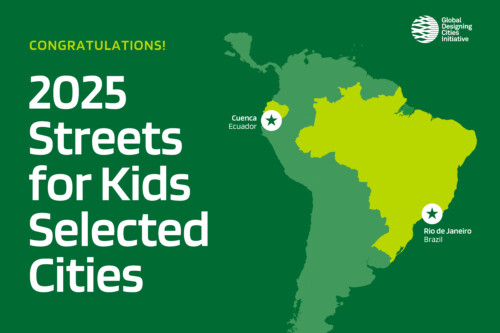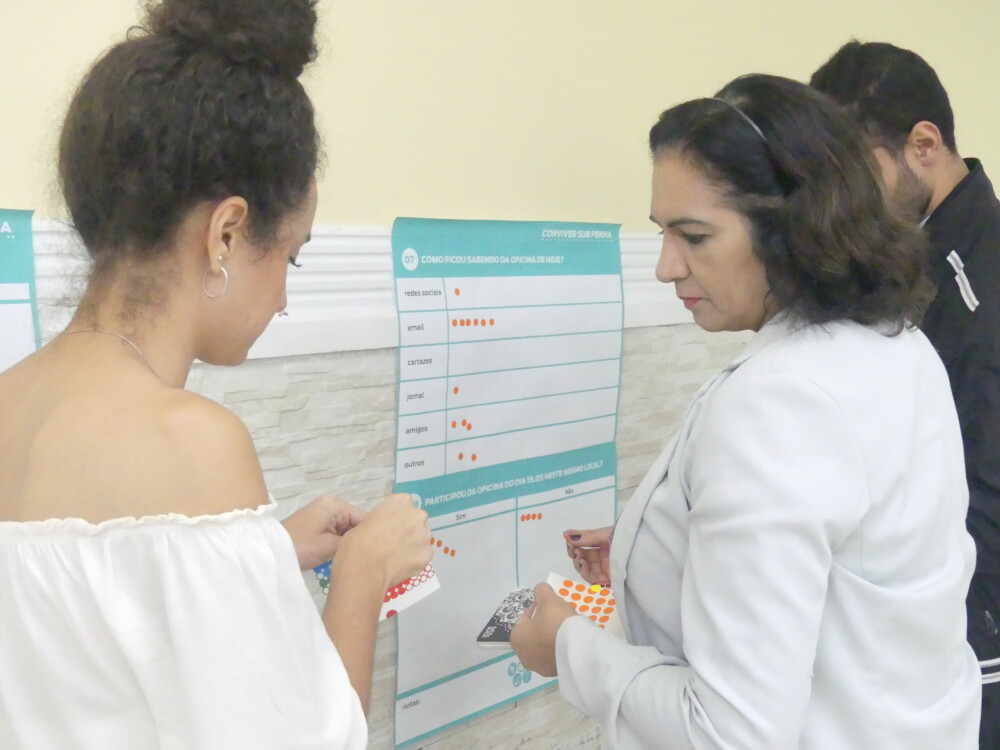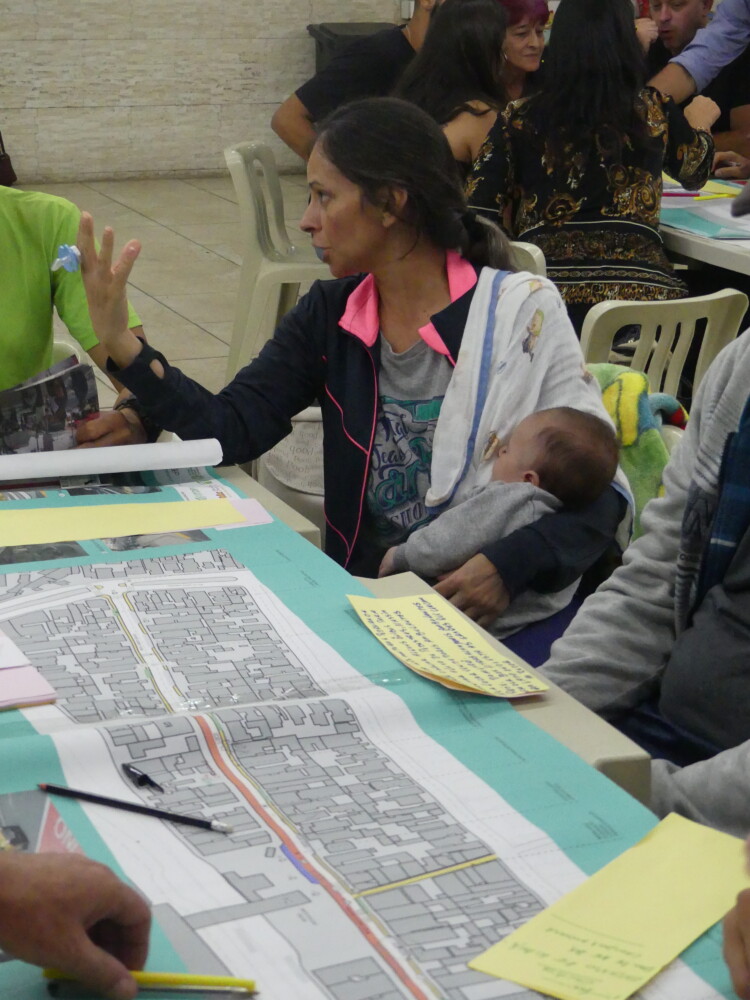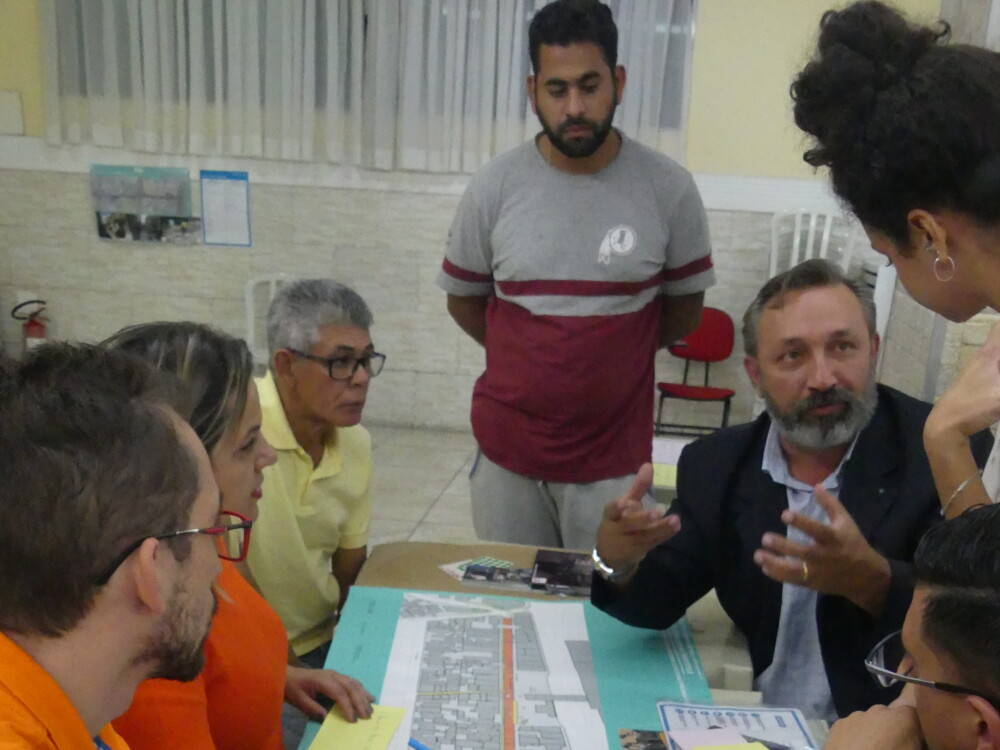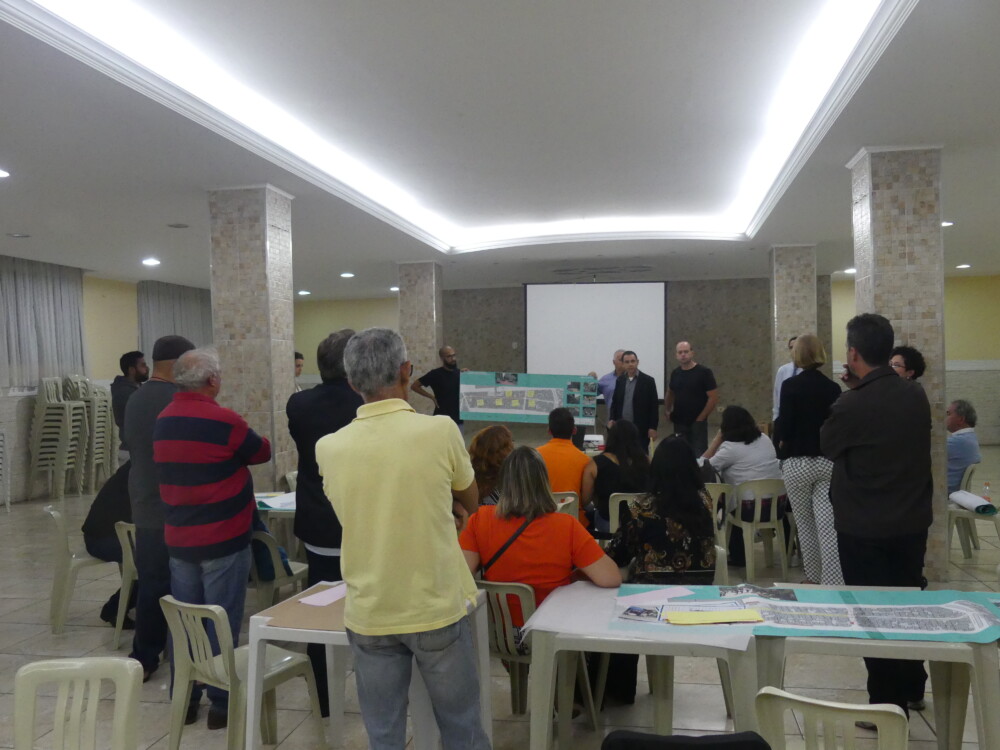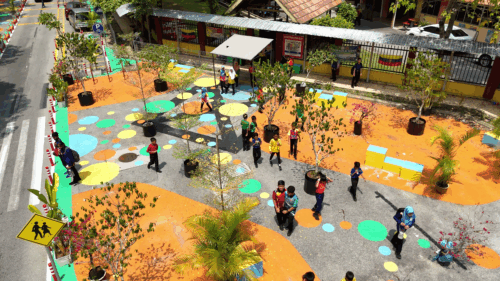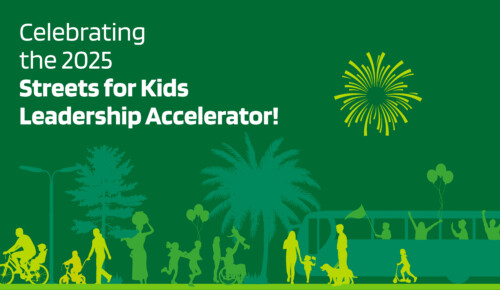Penha Opens Its Streets for People!
After a series of community engagement workshops in the borough of Penha in São Paulo, Brazil, the mayor of Penha announced the launch of Car-Free Fridays, prohibiting personal vehicles from entering the Artur Alvim site every Friday in July. One day per week, Dr Campos Moura Street will transform into a transit-only street and extend existing pedestrian space by using vehicle parking spaces for parklets and other activities. The Borough of Penha, GDCI, and the Bloomberg Initiative for Global Road Safety (BIGRS) are working together to develop the design and program for each Car-Free Friday event.
Community demand for safety and pedestrian-focused streets
Three community engagement workshops in May provided a thorough understanding of the community’s priorities for the site, which will drive the detailed design for the interim implementation. These priorities include pedestrian safety, transit efficiency, organizing street vendors, freight delivery efficiency, paid parking locations, and pedestrian amenities such as parklets. Following ongoing engagement with the local community during Car-Free Friday events, the project will be implemented for a two-month period beginning in August. During this time, interim materials will be used to trial a new, innovative approach to safe street design for the city of São Paulo.
In case you missed it, see our first blog post about the launch of this partnership. Stay tuned for more updates!
